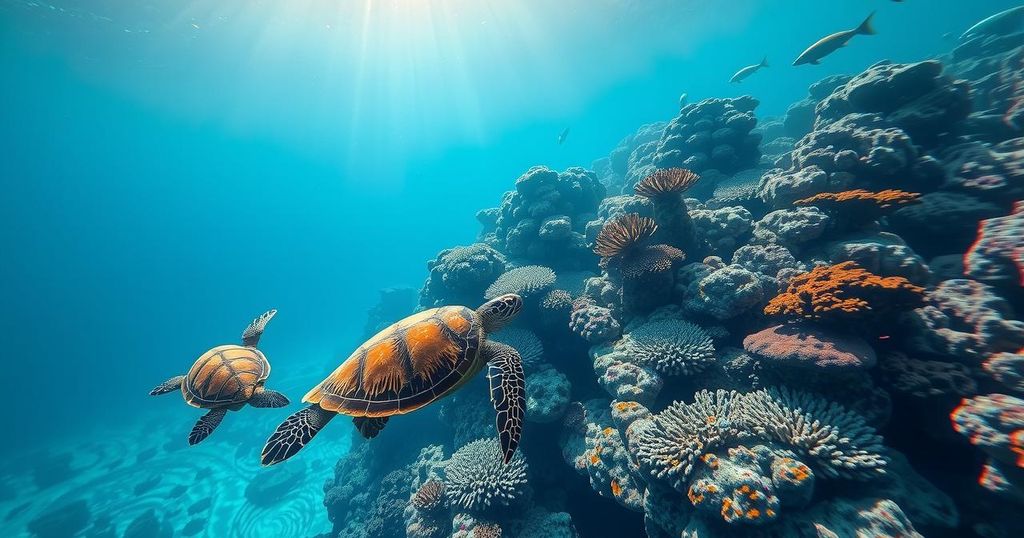Global Sea Turtle Consumption Linked to Over 420 Deaths Worldwide
A study has linked the consumption of sea turtles to 420 fatalities and over 2,400 victims worldwide due to chelonitoxism. Recent incidents included deaths in the Philippines and Tanzania after consuming sea turtle meat. Hawksbill turtles are primarily responsible for poisoning incidents, with significant health risks involved in their consumption.
A recent study has uncovered alarming statistics regarding the consumption of sea turtles, linking it to 420 fatalities and over 2,400 victims globally due to chelonitoxism, a rare but severe seafood poisoning. The latest tragedy occurred in the Philippines, where three individuals lost their lives and 32 were hospitalized after consuming an endangered sea turtle in stew. Prior incidents include one in March 2024 in Tanzania, resulting in nine deaths and 78 hospitalizations after eating turtle meat.
Chelonitoxism, also recognized as sea turtle poisoning, can cause symptoms such as nausea, vomiting, abdominal pain, and diarrhea, impacting the upper digestive tract. In addition to these symptoms, affected individuals may experience dizziness, malaise, and sweating. Generally, recovery occurs within a week without complications, although severe cases can lead to glossitis, dysphagia, drowsiness, multi-organ failure, coma, or even death.
The study, published in December 2024 by Science of the Total Environment, analyzed 62 incidents of chelonitoxism across the Caribbean and the Indian and Pacific Oceans, involving at least 2,424 illness cases and 420 fatalities. The highest concentration of such incidents is reported in remote areas of the Indo-Pacific, including regions like Zanzibar, Madagascar, India, Japan, Sri Lanka, Taiwan, the Philippines, and Papua New Guinea.
Notably, nearly 70 percent of the reported cases originated from Madagascar (25.4%), India (13.6%), French Polynesia (10.2%), Sri Lanka (8.5%), and Papua New Guinea (8.5%). The study also highlighted that 31 percent of the illegal turtle exploitation occurred in Haiti, indicating there may be rampant underreporting of poisoning cases within the Caribbean and surrounding regions.
Hawksbill turtles are the primary culprits behind these poisoning incidents, responsible for 59 percent of the cases, while green turtles account for 23 percent. Additionally, other species such as loggerhead, flatback, olive ridley, and leatherback turtles have been implicated in chelonitoxism. All turtle organs are believed to be toxic, raising concerns regarding the consumption of both adult turtles and their eggs, often sought after for supposed aphrodisiac effects.
Breastfed infants can also be at risk as toxins can transfer into breast milk, underscoring the broader implications of sea turtle poisoning. The study suggests that intravenous lipid emulsion treatment may serve as an effective remedy for poisoning victims, previously utilized to treat sea turtles afflicted with brevetoxicosis.
In summary, the consumption of sea turtles poses significant health risks due to chelonitoxism, leading to numerous fatalities and severe health issues globally. The highest incidence rates are found in the Indo-Pacific region, particularly Madagascar and India. It is critical to raise awareness about the dangers of consuming sea turtles and the potential consequences for both individuals and communities. Furthermore, addressing illegal turtle harvesting practices is essential in mitigating these incidents.
Original Source: www.jamaicaobserver.com




Post Comment